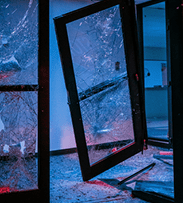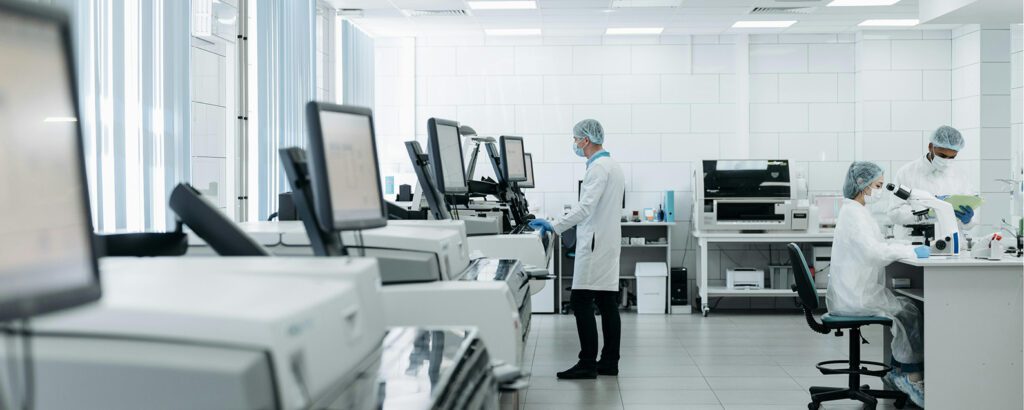

Being LPS 1175 Issue 7 and Issue 8 accredited, Charter Global have been supplying and installing high security shutters to businesses in this industry for many years. Many of our products in the Obexion range are suitable for this as the security ratings span from B3 (SR2) to E20.
An extremely lucrative field, laboratories and pharmaceuticals have significant insurance premiums when regarding research equipment and machinery, medical and scientific professionals, and the actual chemicals. The security measures in place must be sufficient in protecting against forced entry and sabotage, with focus on the detection and delaying of any threat.
Corporate companies spend billions every year on the production of mass-market medications and the continual research of experimental drugs. Hounded by the press and environmental organisations against the development methods used, the pharmaceuticals industry is an interesting one.
Corporate overheads are revered over the drugs themselves, often disregarding the benefits or side effects in preference for the premiums, with the risk of public and therefore economic failure a main motivator of production.
The pharmaceutical-grade drug market is corrupted by counterfeit medications, with ten percent of the worldwide trade estimated to be counterfeited by the World Health Organisation (WHO), which poses a significant risk on production element of this supply chain.
Find out how Charter Global can protect your laboratory
Assets contained within these laboratories such as exploratory medical equipment have high black-market values, so vested parties who will not entertain effective security solutions will do so to their own detriment.
In terms of what this means for securing laboratories, monetary restrictions are essentially non-existent, but risks can appear as anything from targeted vandalism in protest of testing methods to espionage from competing pharmaceuticals.
Sites will require high standard of physical security, along with sophisticated teams and technological systems to create integrated and smart property control.
Understanding the risks posed to any site is the most effective approach to integrated security. At best, the pharmaceuticals industry is controversial and therefore faces risks from every possible angle.
Splitting the risks by priority level is an effective way to oversee the security implications. Low-level priorities include opposition from activists that disagree with testing methods.
On one hand, the physical risk to site is relatively low, forced entry with the intention to release animals can be expected but the risk of equipment damage is more unlikely. If such an organisation were to gain enough traction however, the legal and public implications on the pharma company would be dramatic.
Moving up to medium-risks, intruders that gain access with intention of causing long-lasting damage are considered more dangerous to production. Within this classification, entry will likely be more invasive and with definite potential of casualties. These types of attacks are determined and sophisticated, intended to cause the pharma company huge economic loses and public implications, and are very often emotive attacks.
Finally, high-risk priorities include terrorist attacks and targeted attacks intended to cause massive loss of life and damage. This includes threats of ballistic and blast attacks and in some cases, extreme sabotage attempts. These high-risk threats are less likely than the low- and medium-risk threats, but no less important to protect against.
With the low-risk threat of intrusion, a large pharmaceuticals company will have insurance premiums covering every element with the lab but there must be considerations in place for intruders causing harm to themselves were they to access the facility. Chemical poisoning due to unauthorised access in areas containing hazardous materials threatens the standard of security a facility can achieve and must be mitigated efficiently.

In terms of potential loss of life, the chemicals stored within pharmaceutical facilities and laboratories are the top priority when approaching the security. Dangerous chemicals need carefully handling, and if an intruder were to access the facility without truly understanding the nature of the chemicals on site, could potentially contaminate themselves with dangerous chemicals. If not apprehended in time, this then be released into society and cause damage.
The company, or facility, not only has a vested interest in the continual production but also in the subsequent consequences. The assessment of risk is a good step for any property as it allows of preventative measure to be integrated, rather than having to secure a property following a successful breach.
Disaster management plans are the responsibility of organisation with control, though further consultation with national defence specialists is recommended for full disclosure and must be inclusive all worst-case scenarios relating to chemical, biological and radiological incidents.
One further consideration is the protection of technological assets. Unique chemical compounds and other Intellectual Property (IP) will be stored on company servers, accessible by numerous staff on a national and possibly global level. Cryptology and firewalls will obviously part a large part in this securing this data, but the hardware must be stored within an enclosed room fortified against further attacks. Independent of this sector, Data Centres pose a unique set of requirements when assessing security so servers and processing centres within laboratories will require further reinforcement.

